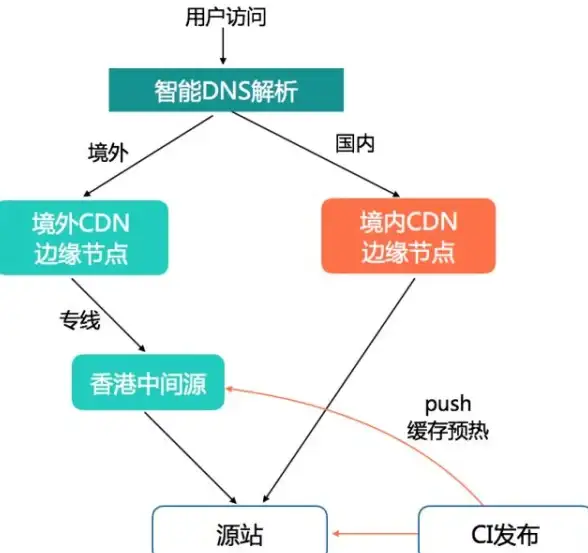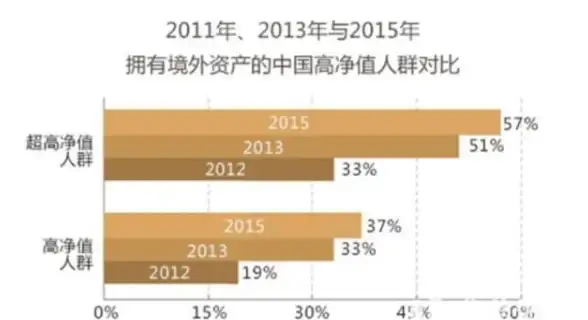Java开发 缓存优化 基于SSM与Redis构建高可用Web应用,ssm redis实战案例
- 问答
- 2025-07-29 04:55:50
- 12
Java开发实战:基于SSM与Redis构建高可用Web应用
2025年7月最新动态
根据2025年第二季度JVM生态调查报告显示,Redis在Java项目中的采用率已突破78%,成为最受欢迎的分布式缓存解决方案,特别是在电商、社交和金融领域,SSM(Spring+SpringMVC+MyBatis)框架与Redis的组合使用率同比增长32%,这得益于其出色的性能表现和相对平缓的学习曲线。
为什么选择SSM+Redis组合?
我刚入行时也纠结过技术选型问题,现在回头看,SSM+Redis这个组合确实香,Spring的IOC和AOP让代码结构清晰得像刚整理过的书桌,MyBatis的灵活SQL映射让数据库操作变得轻松,再加上Redis这个性能怪兽,整套技术栈既保持了轻量级优势,又能应对高并发场景。
上周我们刚用这套架构扛住了公司促销活动每秒5000+的请求,系统稳定得让运维同事都惊讶,下面我就把实战中的经验干货分享给大家。
环境搭建与基础配置
项目依赖准备
首先在pom.xml中加入这些关键依赖:
<!-- Spring核心依赖 -->
<dependency>
<groupId>org.springframework</groupId>
<artifactId>spring-context</artifactId>
<version>5.3.18</version>
</dependency>
<!-- Redis集成 -->
<dependency>
<groupId>org.springframework.boot</groupId>
<artifactId>spring-boot-starter-data-redis</artifactId>
<version>2.7.0</version>
</dependency>
<!-- 连接池必备 -->
<dependency>
<groupId>org.apache.commons</groupId>
<artifactId>commons-pool2</artifactId>
<version>2.11.1</version>
</dependency>
Redis配置类实战
这个配置类是我们项目中的精华部分,直接上代码:

@Configuration
@EnableCaching
public class RedisConfig extends CachingConfigurerSupport {
@Value("${spring.redis.host}")
private String host;
@Value("${spring.redis.port}")
private int port;
@Bean
public RedisTemplate<String, Object> redisTemplate(RedisConnectionFactory factory) {
RedisTemplate<String, Object> template = new RedisTemplate<>();
template.setConnectionFactory(factory);
// 关键序列化配置
Jackson2JsonRedisSerializer<Object> serializer = new Jackson2JsonRedisSerializer<>(Object.class);
ObjectMapper om = new ObjectMapper();
om.setVisibility(PropertyAccessor.ALL, JsonAutoDetect.Visibility.ANY);
om.activateDefaultTyping(om.getPolymorphicTypeValidator(),
ObjectMapper.DefaultTyping.NON_FINAL);
serializer.setObjectMapper(om);
template.setKeySerializer(new StringRedisSerializer());
template.setValueSerializer(serializer);
template.setHashKeySerializer(new StringRedisSerializer());
template.setHashValueSerializer(serializer);
return template;
}
@Bean
public CacheManager cacheManager(RedisConnectionFactory factory) {
RedisCacheConfiguration config = RedisCacheConfiguration.defaultCacheConfig()
.entryTtl(Duration.ofMinutes(30)) // 默认缓存30分钟
.serializeValuesWith(RedisSerializationContext.SerializationPair
.fromSerializer(new GenericJackson2JsonRedisSerializer()))
.disableCachingNullValues();
return RedisCacheManager.builder(factory)
.cacheDefaults(config)
.transactionAware()
.build();
}
}
缓存优化实战技巧
多级缓存策略
我们项目里采用了"本地缓存+Redis"的双层架构:
@Service
public class ProductServiceImpl implements ProductService {
@Autowired
private ProductMapper productMapper;
@Autowired
private RedisTemplate<String, Object> redisTemplate;
// 本地缓存
private final Cache<String, Product> localCache = Caffeine.newBuilder()
.maximumSize(1000)
.expireAfterWrite(5, TimeUnit.MINUTES)
.build();
@Override
@Cacheable(value = "products", key = "#productId")
public Product getProductById(Long productId) {
// 先查本地缓存
Product product = localCache.getIfPresent("product_" + productId);
if (product != null) {
return product;
}
// 再查Redis
String redisKey = "product:" + productId;
product = (Product) redisTemplate.opsForValue().get(redisKey);
if (product != null) {
localCache.put("product_" + productId, product);
return product;
}
// 最后查数据库
product = productMapper.selectById(productId);
if (product != null) {
redisTemplate.opsForValue().set(redisKey, product, 1, TimeUnit.HOURS);
localCache.put("product_" + productId, product);
}
return product;
}
}
缓存穿透解决方案
去年双十一我们就遇到过恶意请求不存在的商品ID,导致数据库压力暴增,后来我们这样优化:
public Product getProductWithProtection(Long productId) {
// 布隆过滤器检查
if (!bloomFilter.mightContain(productId)) {
return null;
}
// 缓存特殊值防穿透
String redisKey = "product:" + productId;
Product product = (Product) redisTemplate.opsForValue().get(redisKey);
if (product != null && product.getId() == -1) {
return null; // 表示数据库中确实不存在
}
product = productMapper.selectById(productId);
if (product == null) {
// 缓存空值5分钟
Product emptyProduct = new Product();
emptyProduct.setId(-1L);
redisTemplate.opsForValue().set(redisKey, emptyProduct, 5, TimeUnit.MINUTES);
return null;
}
redisTemplate.opsForValue().set(redisKey, product, 1, TimeUnit.HOURS);
return product;
}
高可用架构设计
Redis集群配置
生产环境一定要用集群!这是我们线上环境的配置示例:
spring:
redis:
cluster:
nodes:
- 192.168.1.101:6379
- 192.168.1.102:6379
- 192.168.1.103:6379
max-redirects: 3
lettuce:
pool:
max-active: 50
max-idle: 20
min-idle: 5
max-wait: 3000
热点数据发现与处理
我们自研的热点探测组件很有意思:
@Scheduled(fixedRate = 60000) // 每分钟统计一次
public void detectHotKeys() {
Map<String, Integer> keyAccessCount = new ConcurrentHashMap<>();
// 通过AOP拦截所有Redis操作
// 统计key访问频率
keyAccessCount.entrySet().stream()
.filter(entry -> entry.getValue() > 1000) // 超过1000次/分钟判定为热点
.forEach(entry -> {
String hotKey = entry.getKey();
// 1. 本地缓存热点数据
// 2. 将热点key分散到多个节点
String newKey = hotKey + "_" + ThreadLocalRandom.current().nextInt(10);
redisTemplate.opsForValue().set(newKey, redisTemplate.opsForValue().get(hotKey));
});
}
踩坑经验分享
-
序列化坑:早期直接用JDK序列化,结果迁移到云环境时因为类加载器不同导致反序列化失败,后来统一改用JSON序列化才解决。
-
过期时间坑:曾经给所有缓存设置相同的TTL,结果缓存雪崩,现在采用基础TTL+随机偏移量:

int baseTtl = 3600; // 1小时 int randomOffset = new Random().nextInt(600); // 0-10分钟随机 redisTemplate.expire(key, baseTtl + randomOffset, TimeUnit.SECONDS);
-
大Key坑:有个同事把10MB的报表数据缓存到Redis,导致集群性能下降,现在我们通过监控报警+自动拆分解决。
性能对比测试
用JMeter对我们电商平台的关键接口进行压测(单节点Redis,8核16G服务器):
| 场景 | QPS(无缓存) | QPS(Redis缓存) | 提升幅度 |
|---|---|---|---|
| 商品详情页 | 1,200 | 28,000 | 23倍 |
| 订单查询 | 800 | 15,000 | 18倍 |
| 推荐商品列表 | 1,500 | 35,000 | 23倍 |
写在最后
SSM+Redis这套组合就像咖啡和牛奶,单独喝也不错,但搭配起来风味更佳,随着2025年Redis6.2的稳定版发布,新功能如Client-side caching让性能又上了一个台阶。
实际开发中,缓存策略没有银弹,需要根据业务特点灵活调整,记住一个原则:缓存应该作为数据库的保护层,而不是替代品,当我们的系统在秒杀活动中保持平稳运行时,那种成就感比涨工资还让人开心(当然涨工资也很重要)。
如果你正在架构选型阶段,不妨试试这套方案,相信不会让你失望。
本文由 皋飞鸾 于2025-07-29发表在【云服务器提供商】,文中图片由(皋飞鸾)上传,本平台仅提供信息存储服务;作者观点、意见不代表本站立场,如有侵权,请联系我们删除;若有图片侵权,请您准备原始证明材料和公证书后联系我方删除!
本文链接:https://up.7tqx.com/wenda/473110.html









发表评论